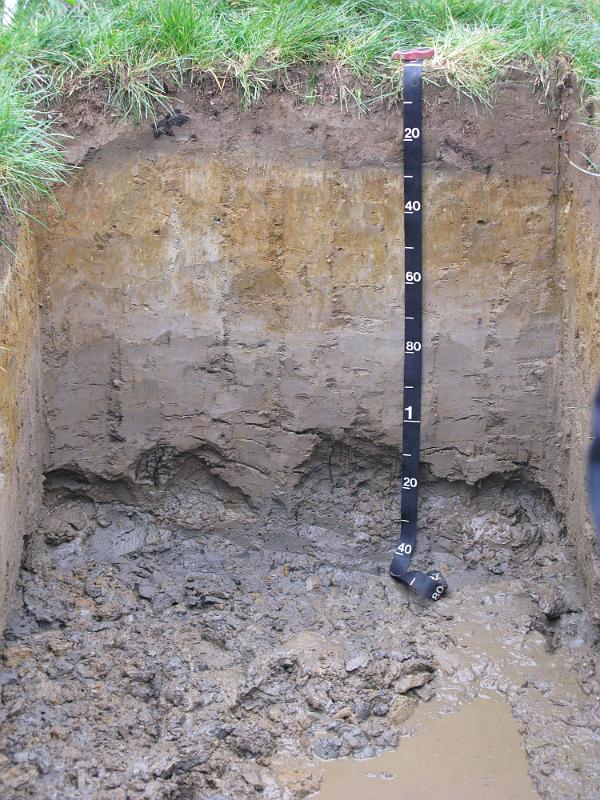Weathering: A Focus on the Burren
Weathering,
both physical and chemical, occurs notably in an area of the Emerald Isle
known as the Burren. Burren means “a rocky place” in Irish Gaelic. The Burren positions
itself on the southern shore of Galway Bay with the Atlantic Ocean to the west.
Karst, or alvar, defines the type of landscape depicted by the Burren. Alvar landscapes are biological environments founded on a limestone plain
amidst thin, or no soil. These landscapes are treeless, grass-covered, and flood-prone. The summer season brings drought to these plains. The Burren emerges as a large table made of great limestone slabs known as
clints. These clints are separated by cracks known as grikes. Grikes are
weak, vertical joints, or cracks in the rock, a result of glaciation. Frost
weathering, a component of glaciation, causes the grikes. Cracks
in the clints fill with ice, triggering an increase in volume. Pressure from the ice
splits the rock apart. The various chemical processes here stem from dissolution, the dissolving of a mineral in water. Limestone dissolution takes prevalence at the Burren. Beneath the Burren lies a scattering of caves; limestone dissolution’s most notable feature. Rivers flow through these caves, assisting in the process of limestone dissolution.
 |
| Map of Ireland showing location of the Burren (South of Galway Bay with Atlantic Ocean to the west) The cities and villages surrounding the Burren include Limerick, Ennis, Shannon, and Killrush. (https://blogger.googleusercontent.com/img/b/R29vZ2xl/AVvXsEgHeMGSqhwd_gaMrVd_zSfVAsx6hcfecVlHC9XR36opwNpKa4s0ADl4-d0vineN_NodlzDjSrBTln1yetDXCufnKPLPXRTbQi8_IT2E2KJjGfXD7dRRTsWr0w8AnXyBrrmviePni60HIoJp/s1600/ireland.jpg) |
 |
| The clint and grike phenomena of the Burren. The plateau-like limestone structures here represent the clints. The deep fissures (especially the one running down the center), signify the grikes formed as a result of glaciation. As frost seeped down into small cracks in the clints, volume expansion occurred, then the frost liquified, producing the grikes. The grikes denote joints in the limestone. (http://cache.graphicslib.viator.com/graphicslib/media/fc/the-burren-photo_4387580-fit468x296.jpg)  The Burren- yes, flowers do grow in the grikes between the clints. (http://www.captivelandscapes.com/imgs/gallerylarge/f8d_5310_759402.jpeg) |

Ailwee Cave: a characteristic of dissolution in the Burren
The water, in the form of moisture seen on the cave's walls is indicative of this process.
Water dissolves the mineral, calcite, found in limestone, and over time, the erosion of the limestone forms caves.
Soils: The Dirty Details
Various elements' culmination create the distinct types of soil in Ireland. The effects of leaching are one such element. Leaching defines itself as the
draining away of a soluble chemical or mineral from soil by the action of a
filtering liquid. The soil profile of Ireland contains four of the six soil
horizons, the O, A, B and C-horizons. The different types of soil found in Ireland
include podzols (and two of its subdivisions), brown earths (including
rendzinas), peats, gleys, and lithosols. Gley contains a high clay percentage.
Peat contains acidic properties and cannot grow crops; however, it does fuel homes and industries.
A map displaying the types of soils found in Ireland
Podzols emit a grey color in its E-horizon (layer) of its profile. Leaching occurs in podzols.
Iron, aluminum oxide and organic matter present themselves in this soil type.
Brown podzolics, a subgroup of podzols, act as a link between podzols and brown earths.
The brown color, humus (decayed organic matter), and minerals aid in creating brown earth soil.
Dark, greyish-brown, humus-rich soil create rendzinas.
Grey brown podzolics contain small amounts of clay in its B-horizon.
Peats' composition primarily consists of decayed vegetation, and classifies itself as a histosol.
Sticky clay soil attributes to the structure of Gleys.
Lithosols form from unweathered or partly weathered rock fragments.

An example of a profile of Ireland's soil.
The profile consists of gleysol.
In descending order, the horizons include:
O-horizon-immediate organic material
A-horizon-humus layer
B-horizon-brown layer, clay-enriched
C-layer-no organic matter, called regolith (loose material covering rock)
A video explaining the importance of peat bog conservation
Peat bogs fuel homes and industries in Ireland.
Bog depletion drives global warming.
A very controversial issue.
Research Sources
McKnight's Physical Geography: A Landscape Appreciation Tenth Edition